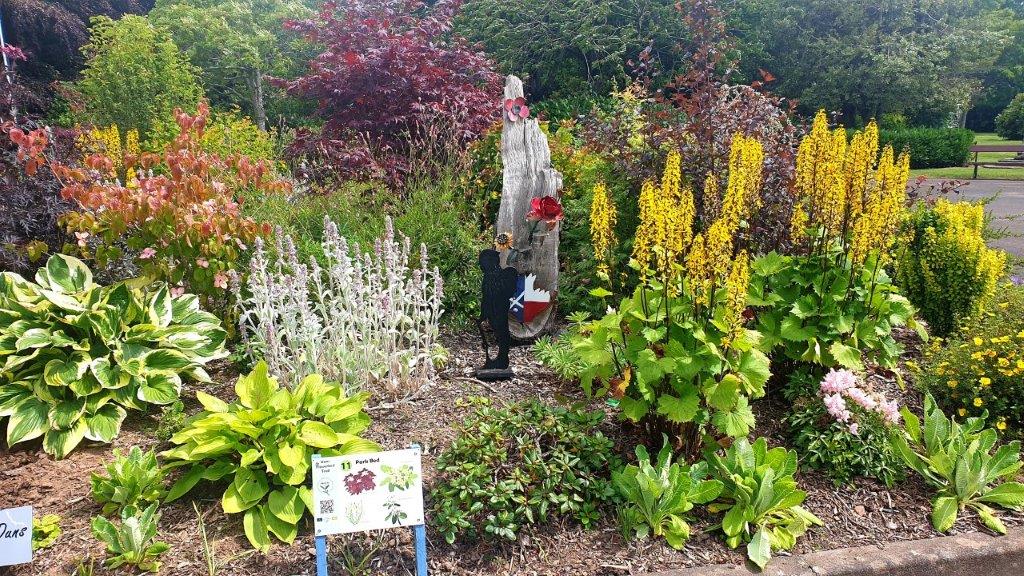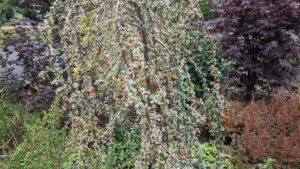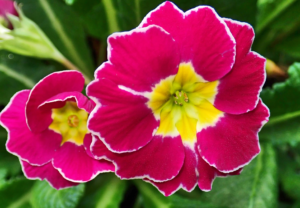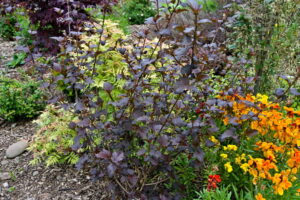
 |
Robust and Reliable --- Cotoneaster also known as Rockspray | Cotoneasters are definitely showstoppers. They are evergreen or semi evergreen with small deep green leaves. In June look out for clusters of creamy white flowers. The flowers are followed in Autumn by brilliant berries much loved by birds. Our berries are bright red but berries can also be golden yellow. --- Did you know? Cotoneaster is great for growing up walls but there is also a Cotoneaster named ‘Horizontalis’ that is excellent for growing as ground cover. It can be invasive though so grow it carefully. Cotoneaster berries are toxic and should not be eaten. |
 |
Fabulous Fragrance --- Genista also known as Broom | Genista is a shrub with trailing arching branches and blue grey leaves. In early Summer look for small pea like flowers in very bright yellow. The flowers are fragrant with a gentle aroma of bracken. Our Genista is called ‘Lydia’. Genista copes well with winds and dry Mediterranean type weather. --- Did you know? There are two shrubs that share the common name of ‘Broom’ :- Genista and Cytisus . They are tricky to distinguish visually but Genistas are more tolerant of alkaline soils. Genista also looks similar to yellow prickly Gorse (Ulex) . |
 |
Wildlife Welcomer --- Polyanthus also known as Primula or Primula polyanthus or False Oxlip | Polyanthus are beautifully colourful in Springtime and flower in shades of red, yellow, pink, white and purple. Look for low clusters of plain dark green leaves and rosettes of bell or saucer shaped flowers. The flowers are a good early nectar source for pollinators. --- Did you know? There are many different types of Primula. Primula auricula flowers grow in clumps above upright stems. The Victorians loved them and used to display them in matching small pots on shelves known as ‘plant theatres’. |
 |
Fantastic Foliage --- Physocarpus also known as Ninebark | Physocarpus has incredible deep purple three lobed leaves. In the Summer also look out for clusters of tiny white flowers followed by small brown berries in the Autumn. Did you know? Physocarpus prefer the soil to be slightly acidic and may become yellowed in alkaline soils. --- Did you know? Physocarpus is called Ninebark because as it matures the bark peels away in thin layers and multiple colours. |
 |
Fantastic Foliage --- Japanese Maple also known as Acer palmatum atropurpureum | Japanese Maples are small deciduous trees with beautiful vibrant leaf shape and colour. There are many to choose from. Ours is called Acer palmatum atropurpureum. It has deep red purple leaves that turn scarlet in Autumn. Japanese Maples are mainly slow growing and can be weeping, cascading or upright. The leaves are usually green, deep red or purple or marked with cream, yellow or pink. --- Did you know? Japanese Maples will grow happily in pots so are perfect for a small garden. They don’t like cold frosty winds though so keep them sheltered. |
 |
Fantastic Foliage --- Sorbaria ‘Sem’ also known as False Spirea, False Goat’s Beard or Sorbaria sorbifolia ‘Sem’ | Sorbaria ‘Sem’ is a lovely compact shrub. Look for the lovely thick fern like foliage. In the Spring it is flushed with pink and in the Summer it is a pretty pale golden green and has clusters of small creamy white flowers. In the Autumn the leaves turn bright red so it is a super shrub for seasonal interest. --- Did you know? Sorbaria ‘Sem’ has really nectar rich flowers that attract bees, insects and other beneficial pollinators. |
 |
Seasonal Showstopper --- Amelanchier also known as June Berry or Snowy Mespilus | Amelanchier is a favourite small tree to choose if you want all season interest in your garden. In Springtime look for delicate star shaped white flowers. The young leaves are bronze then mature into dark green then again turn orange red in the Autumn. In June the tree produces dark green then purple black ornamental berries much loved by birds. --- Did you know? Amelanchier berries are toxic and should not be consumed by humans. |
 |
Seasonal Showstopper --- Astilbe also known as False Goat’s Beard and False spirea. | Astilbe flower in shades of red, pale pink, vivid pink and white. Look for tall fluffy plumes of upright flower spikes above strong green fern like foliage, sometimes with red tinted stems. Astilbes are quite showy and good for adding a splash of colour to a dark spot. --- Did you know? Astilbes like to thrive in reliably moist rich soil in light shade. They really don’t like dry soil and hot sunshine. |
Next is our Beacon Bed which was added to the Flower Trail in 2024. Please walk to the Boston Court gates going towards the park grass and play area.
Disclaimer
Our plants are grown for ornamental purposes only. We do not advise touching or ingesting any parts of the plants on the Duns Flowerbed Trail. Many plants can be an irritant or toxic when smelt, ingested or touched. All the ‘Did you know?’ information about alternative plant use is provided for educational interest only.
